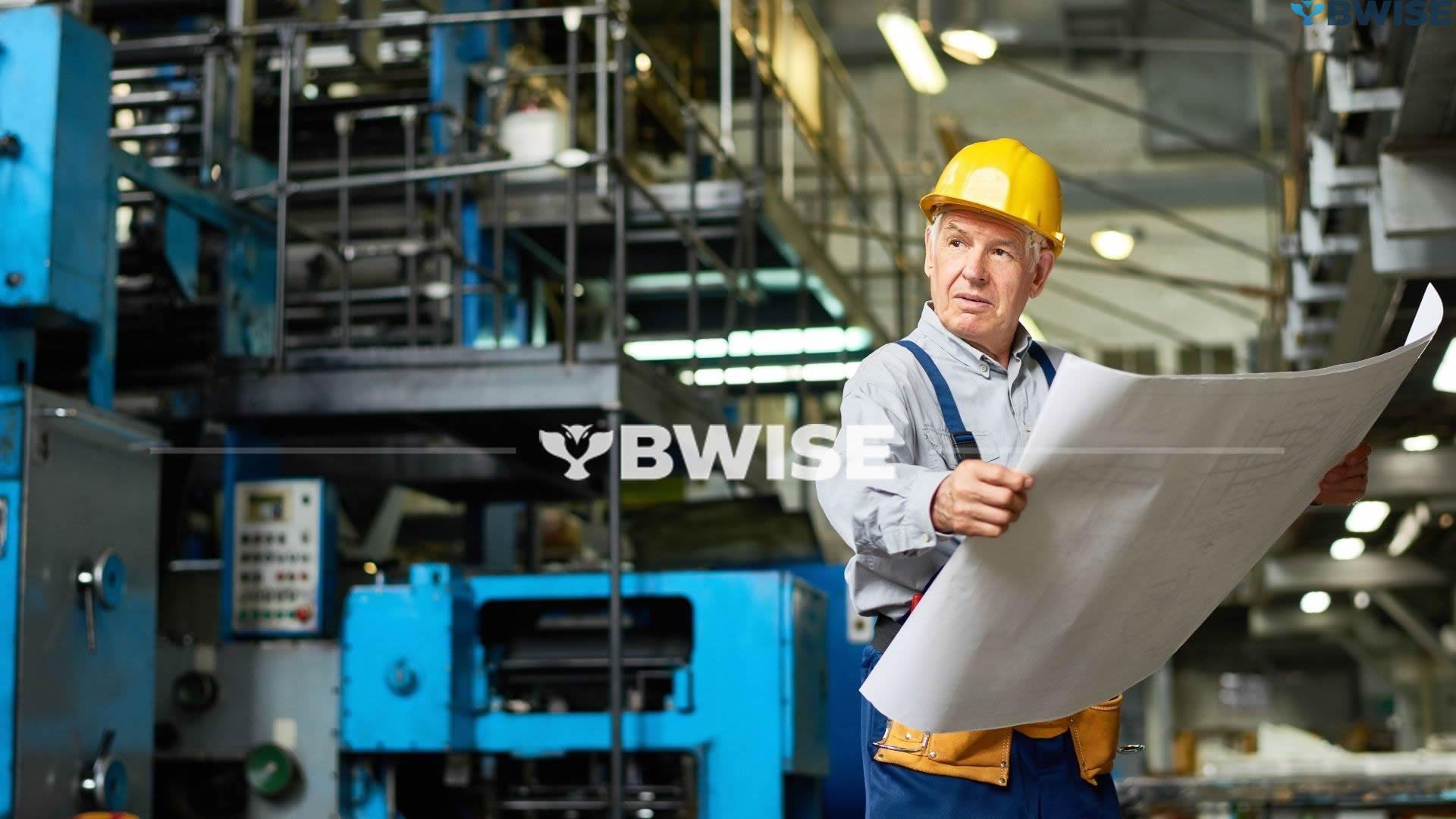Manufacturing is a constantly evolving field. Winning is all about mastering production planning. As we approach 2024, fresh advancements and tactics are shaking things up. These provide big opportunities for manufacturers to enhance their processes and outdo their rivals.
Let us dive into the lead trends shaping production planning in 2024. The digital revolution and Industry 4.0 tech are causing a stir. They’re not only beefing up supply chains but also nudging industries towards green practices. This shift is morphing how manufacturers strategize, execute, and continually enhance their operations.

Key Takeaways
- Adoption of digital transformation and Industry 4.0 technologies to drive production planning efficiency
- Increased focus on sustainable and eco-friendly practices in manufacturing
- Emphasis on supply chain resilience and agility to mitigate disruptions
- Advancements in demand forecasting and resource optimization
- Collaborative planning and execution to enhance cross-functional coordination
Embracing Digital Transformation
Changes are sweeping through the manufacturing sphere quickly. Businesses are now leaning on digital advances to enhance their production strategies. They’re harnessing tools of Industry 4.0 such as IoT, AI (Artificial Intelligence), and machine learning. These devices are crucial in decision-making, hinging on data, and refining operational methods.
Leveraging Industry 4.0 Technologies
The fourth industrial revolution remodels manufacturing strategies. IoT aids businesses in compiling data from multiple sensors and gadgets. This information, enhanced by high-level analytics and machine learning, supports informed decision making. It optimizes both planning and resource utilization.
Enhancing Data-Driven Decision Making
Industry 4.0 has empowered businesses to use data in their manufacturing plans. They analyze previous patterns and forecast what is next. This strategy improves their prediction accuracy, effective inventory control, and timely product deliveries.
Sustainable and Eco-Friendly Practices
People everywhere are realizing how vital it is to guard our Earth. Those who make things are at the forefront of this movement, embracing methods that are kind to the environment. The goal? Reduce garbage, conserve power, and harness sources that can replenish themselves, all for a cleaner tomorrow.
Businesses are taking green steps nowadays. They are adopting renewable energy, implementing the circular economy, and honing their production procedures. This leads to reduced waste and cut-down emissions. This not only benefits the Earth, but also conserves money for businesses and fortifies trust among eco-conscious consumers.
More and more people are leaning towards green actions as we understand the damage classic production inflicts on Earth. Upon opting for an eco-friendly strategy, businesses can lessen their environmental impact, conserve nature’s gifts, and contribute to a roundabout economy. This kind of economy appreciates using materials again and turning trash into treasure.
People are increasingly preferring eco-friendly goods. So, businesses turning green might get a market advantage. This shift to environment-friendly production is not only beneficial for the earth but also creates new avenues for progressive firms.

Supply Chain Resilience and Agility
Keeping pace with the rapidly evolving business environment calls for a robust and nimble supply chain today. Firms need to anticipate supply chain challenges and efficiently keep stock. This secures an uninterrupted line of goods and resources.
Mitigating Supply Chain Disruptions
Natural events, politics, or health issues can shake up supply chains significantly. Yet, businesses are bouncing back with robust risk management strategies. Apart from this, they’re diversifying their suppliers and striving to make their supply chain more clear-cut.
This way, they can quickly handle disruptions and keep production running smoothly. It helps them keep customers happy.
Optimizing Inventory Management
Effective stock control is crucial for a robust supply chain. Employing high-tech analysis and up-to-the-minute information allows businesses to forecast needs accurately. This helps maintain just the right amount of inventory, never excessive or inadequate.
This flexible approach lets them quickly adjust to market changes. It ensures they always have the important materials and parts they need.
Production planning teams can bounce back from turbulence by investing in resilient and nimble supply chains. This allows for continual operations and satisfying customer expectations. In a fluctuating business environment, this adaptable supply chain is a massive benefit for advanced manufacturers.
Production Planning
In today’s manufacturing world, production planning is key to better operations. Companies use new tools for demand forecasting and resource allocation. This helps them match supply and demand, cut waste, and boost productivity.
Demand Forecasting Advancements
Traditional methods of predicting demand have been replaced. Today, manufacturers harness sophisticated data tools to gain insights into market trends and consumer desires. They utilize machine learning and predictive analytics for demand forecasting, enabling them to foresee demand shifts and tweak production ahead of time.
Optimizing Resource Allocation
Right assignment of resources is key to making things. Businesses apply plans for material and capacity. They get the best from what they have – stuff, workers, and tools. This method lets them skip idle times, cut storage charges, and boost smooth running.
Collaborative Planning and Execution
When it comes to managing production, teamwork is vital. There is a lot to gain for manufacturers when they collaborate with varied teams and apply ERP (Enterprise Resource Planning) systems like BWISE. These instrumental resources aid in planning, decision-making, and synchronized action across various units.
When businesses collaborate, they pool each other’s talents and thoughts, spanning manufacturing, distribution, financial planning, and beyond. It aids in establishing objectives, fine-tuning workflows, and enhancing decision-making abilities. This results in improved production effectiveness and swift reactions.
Enhancing Cross-Functional Coordination
Old ways of planning in separate parts are gone. Now, successful manufacturers work together across departments. They plan together to meet market needs, use resources well, and keep operations running smoothly.
ERP systems are key to this teamwork. They offer a single place for data, workflows, and decisions. This lets teams share info and work towards a shared goal: making quality products on time and within budget.
Advanced Analytics and Predictive Modeling
Nowadays, factories lean on fancy number-crunching and fortune-telling tech to keep an edge. They drill down into the giant info pile from their day-to-day run. It guides them to wiser, fact-backed decisions.
The way we plan production has been revamped by complex analysis. Predictive models allow businesses to recognize demand trends, making full use of resources and identifying potential supply chain hitches in time. This enables them to modify their output to satisfy market demands.
Decisions based on data can create opportunities for increased performance and saving money. It aids in identifying ways to enhance and foresee potential equipment malfunctions. Advanced statistics and forecasting methods are revolutionizing how we plan production.
Lean Manufacturing and Continuous Improvement
Manufacturers are now turning to lean manufacturing and continuous improvement. These strategies help cut waste, make processes smoother, and boost efficiency. They are key for companies wanting to do more with less.
Minimizing Waste and Maximizing Efficiency
Lean manufacturing works to eliminate all forms of waste. This includes wasting time, resources, and energy. With kaizen, which means small improvement steps, businesses can enhance and streamline their production process.
Businesses utilize information and group feedback to identify potential enhancements. This could include reducing stock, streamlining material movement, or optimizing machine usage. Prioritizing waste minimization enhances efficiency and contributes to the company’s ongoing sustainability.
By adopting a lean mindset, manufacturers see big benefits from continuous improvement. They encourage innovation and let their team solve problems. This leads to better efficiency, more profit, and a stronger position in the market.
Internet of Things (IoT) Integration
The Internet of Things, or IoT, rapidly revamps our production planning. It gifts manufacturers the power to watch and steer their procedures as they happen. By linking up sensors and gadgets, businesses can peek into the heart of their production. The reward is swift adjustments and optimized efficiency.
Real-Time Monitoring and Control
The rise of IoT ushered in a fresh era of smart manufacturing. It centers on utilizing instant data to boost productivity and efficiency. IoT sensors and devices allow manufacturers to instantly monitor elements like machine performance and product quality.
This means they can make changes quickly if something goes wrong. It helps control and improve the production process.
Using IoT in production planning brings many benefits. It helps with better process control, less downtime, and better decision-making. This lets companies run smoother and stay ahead in a fast-changing industry.

Workforce Upskilling and Automation
Industry 4.0 is speeding up changes in manufacturing. It is important now more than ever to help workers gain new skills. Mixing in automation is significant too. With upgraded abilities, employees can work better with high-tech equipment. This way, we can boost efficiency and productivity in production.
Companies are spending a lot on training to get workers ready for the digital shift. They are learning about data analysis and how to work with automation and robotics. This makes workers valuable in today’s production planning. It also helps companies stay ahead in a changing market.
Introducing tech and automation is not about phasing out people. It’s about creating constructive collaboration between them and these resources. Workers, with specific training, leverage the rewards of automation. This assists them in making improved choices and quickly addressing issues. This collaboration between humankind and machines is critical to remain in the race and meet consumers’ demands.
Cloud-Based Production Planning Solutions
Cloud-based solutions are changing the game in production planning. They use software-as-a-service (SaaS) and enterprise resource planning (ERP) systems. This makes production planning more scalable and accessible for manufacturers.
Scalability and Accessibility
Cloud-stored systems bring growth that is easy to adjust. Companies can expand or scale down production without fretting over outdated setups. This adaptability is crucial in our ever-evolving marketplace, making it easier for producers to keep up.
These fixes enable users to reach vital data and tools, no matter their location. It boosts the cooperation among remote teams, speeding up decision-making. Regardless of where your teams operate, production planning remains robust and efficient.
Cloud-based solutions are an immense help for manufacturers today. They offer great scalability and accessibility. This lets businesses quickly adapt, make smart decisions, and stay competitive.
Cybersecurity and Data Protection
In today’s world, cybersecurity threats are on the rise. Manufacturers must protect their production plans from these threats. They need to focus on keeping their data safe and private.
Manufacturers are now using strong cybersecurity steps and data protection plans. They use advanced cybersecurity solutions to protect their systems. They also use digital risk management to lessen the damage from cyber-attacks.
Now, cybersecurity dangers are climbing high. It is crucial for manufacturers to shield their manufacturing plans from such risks. Their primary responsibility is ensuring the data remains secure and confidential.
Now, cybersecurity dangers are climbing high. It is crucial for manufacturers to shield their manufacturing plans from such risks. Their primary responsibility is ensuring the data remains secure and confidential.
Conclusion
Looking ahead to 2024, the manufacturing world is changing fast. Digital technologies like Industry 4.0 and data-driven decisions are making things more efficient and competitive.
Sustainability is now a big focus, with companies working to be more eco-friendly. They are also building strong supply chains. This helps them stay quick and adaptable to new market needs.
Advanced analytics and the Internet of Things (IoT) bring new insights and control to production. Lean manufacturing and continuous improvement help cut waste and boost quality. Upskilling the workforce is key to staying ahead in this changing landscape. For more information about BWISE, feel free to schedule a demo. Remember B1 – BWISE
